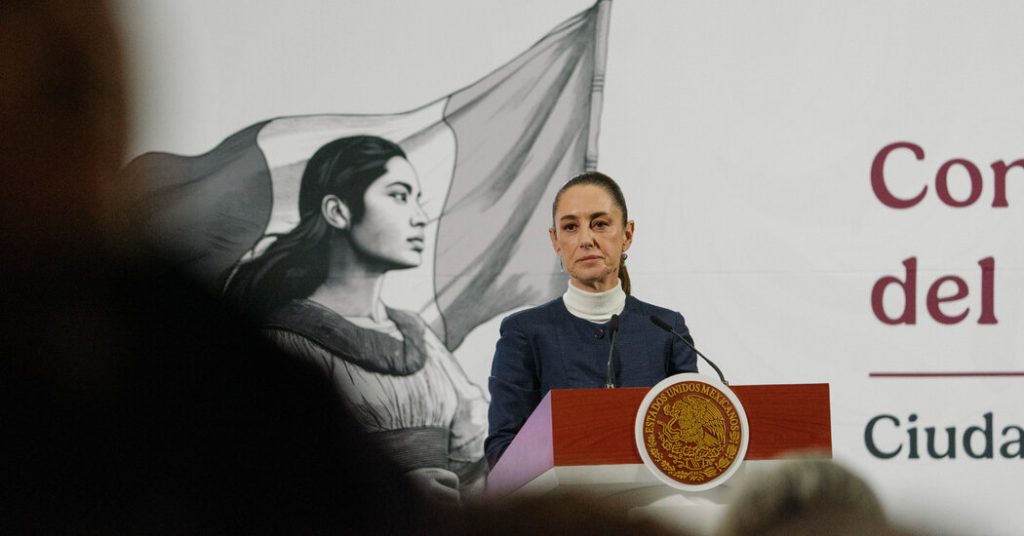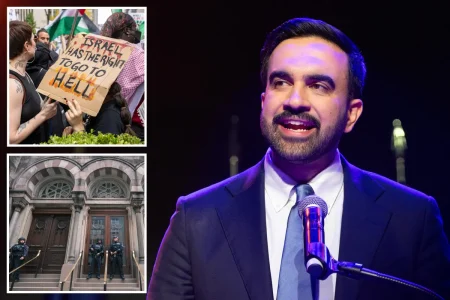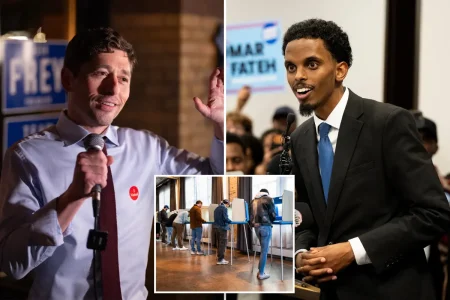At the heart of this intense diplomatic dance lie two leaders—Prime Minister Justin Trudeau of Canada and President Claudia Sheinbaum of Mexico—faced with the formidable task of navigating a high-stakes standoff with Donald Trump, the mercurial U.S. president threatening to levy tariffs on their countries. Their goal was the same: secure a reprieve from the tariffs, which would have sparked a North American trade war, while giving up as little as possible in return. By Monday afternoon, mere hours before the tariffs were set to take effect, both leaders had pulled off what appeared impossible: a 30-day delay with minimal concessions. Yet, the paths they took to achieve this compromise revealed striking differences in leadership styles and their nations’ rapport with the United States.
Two Roads to the Same Goal
Trudeau and Sheinbaum’s approaches couldn’t have been more different, shaped by their personalities, political landscapes, and their countries’ histories with the United States.
Trudeau’s path was marked by preparation for confrontation—a strategy that blended tough talk with carefully laid plans. Having anticipated the escalation since a November meeting with Trump at Mar-a-Lago, he kept options open for negotiation but also built a robust contingency plan, both politically and logistically. Sheinbaum, on the other hand, leaned into calm diplomacy and private negotiations. Emphasizing partnership and measured dialogue, she forged a quieter, yet arguably faster, route to compromise.
In the end, both leaders agreed to bolster their borders—Canada’s northern frontier and Mexico’s southern one—to curb unauthorized migration and stem the flow of fentanyl, a synthetic opioid fueling the overdose crisis in the United States. However, much of what they conceded had already been in motion before the tariff showdown even began.
Canada: Calculated Risks and Emotional Appeals
Canada’s leg of the drama began in earnest right after Trump first issued his tariff threats on November 25. Rather than wait passively, Trudeau immediately sought an audience with Trump, traveling to Mar-a-Lago to lay the groundwork for negotiations. The exchange did not yield an instant resolution, but it provided clarity on Trump’s demands: tighter migrant controls and a clampdown on fentanyl trafficking.
From that point onward, Trudeau’s administration kicked into high gear. Aware of the potentially catastrophic effects of tariffs on the Canadian economy, Trudeau’s team enacted a multipronged strategy. On the one hand, they deployed diplomatic heavyweights to court influential figures within Trump’s circle of trust. Foreign Minister Mélanie Joly and Finance Minister Dominic LeBlanc became pivotal players, trekking to Washington repeatedly and building personal connections with Republican lawmakers and figures like Trump’s commerce secretary nominee, Howard Lutnick. Joly even reassured U.S. officials that Canada’s efforts at the northern border would free up American resources for the more contentious southern border.
Simultaneously, Trudeau laid the foundation for a bold retaliatory plan. If Trump went ahead with his tariffs, Canada would respond in kind. This no-nonsense approach extended beyond rhetoric. By December, his government had unveiled a $900 million strategic investment to bolster border security, replete with helicopters, drones, and additional enforcement personnel.
Still, Trudeau reserved his most dramatic moment for last. On Saturday evening, after the White House declared that tariffs would proceed, he addressed Canadians in an emotional televised speech that doubled as a direct message to the American public. His words underscored the depth of the Canada-U.S. partnership while reaffirming Canada’s resolve to stand strong. It was an appeal to shared values, one that reframed the tariff battle as an unnecessary wedge between close allies.
The drama did not dissipate easily. When Trudeau and Trump spoke by phone Monday morning, they failed to agree on a compromise. Several stressful hours elapsed before a second call finally secured the deal: Trump would delay the tariffs for 30 days in exchange for Canada’s promise to intensify its anti-fentanyl efforts, including appointing a “fentanyl czar” and allocating additional funds to combat organized crime.
Mexico: Quiet Resolve and Pragmatic Diplomacy
Meanwhile, Mexico’s President Claudia Sheinbaum pursued a markedly different strategy that relied on steady pragmatism. Even before she officially took office, she had been bracing for the possibility of Trump’s return to power and the reemergence of disruptive tariff threats. Her approach from the start was to seek dialogue and emphasize collaboration.
Where Trudeau threatened tariffs of his own and detailed Canada’s border enforcement plans publicly, Sheinbaum kept her cards close. Even after Trump vowed on Saturday to move forward with tariffs, Sheinbaum refrained from unveiling her response immediately. Instead, she urged Trump to consider forming a bilateral working group on security and public health before making drastic leverage moves.
Her tone throughout remained composed—cooler than her predecessor Andrés Manuel López Obrador, who had faced similar tariff scares during Trump’s first presidency but often opted for confrontational rhetoric. Building on Mexico’s solidified economic ties with the U.S., including its newfound status as the largest importer of American food and agricultural products, Sheinbaum banked on maintaining a cooperative tone.
The payoff came swiftly. Early Monday, Sheinbaum and Trump spoke on the phone, and shortly thereafter, the two leaders announced a compromise. Mexico, like Canada, would commit to enhancing border security and accelerating its efforts to curb the spread of fentanyl—measures, it was revealed, that largely aligned with policies already in place. By posting updates on social media and briefing reporters on the “very respectful” nature of the conversation, Sheinbaum deftly reframed the outcome as a mutually beneficial win. Her assurances to Trump—that these efforts would yield “good results for your people, good results for the Mexican people”—struck a conciliatory tone that likely left room for further diplomacy when the 30-day deadline arrives.
A Tale of Two Leaders
At its core, this trade drama underscores how leadership style and tactics can shape international negotiations, even when the end goal is the same. Trudeau’s mix of assertiveness and emotional appeals reflected an urgency fueled by his forthcoming political transition. With Trudeau set to step down in March, the tariff reprieve represents a closing act in his time as prime minister—a chance to recast himself as a defender of Canadian interests, despite his waning domestic popularity.
Sheinbaum, in contrast, handled the crisis with poise and subtlety, positioning herself as a steady hand and a willing partner rather than an adversary to the United States. Her ability to secure the tariff delay ahead of Trudeau further cemented her reputation as a pragmatic leader, an approach that may grant her further success in managing Mexico’s evolving role as an economic and diplomatic powerhouse.
Looking Ahead
Though a collective sigh of relief echoed across North America after Monday’s deals, the reprieve is temporary. Both leaders face the same question: how to keep Trump at bay once the 30-day clock runs out. For Trudeau, the journey will likely end with his resignation, leaving the fallout to his successor. For Sheinbaum, though, it’s just the beginning of what could be an extended balancing act between satisfying U.S. demands and upholding Mexico’s sovereignty.
In the intricate calculus of diplomacy, both leaders earned their temporary victories. But it’s clear that Trudeau’s show of force and Sheinbaum’s quiet maneuvering reflect not just divergent leadership philosophies, but also the shifting dynamics of a North America navigating the resurgence of a familiar president and the challenges of an interconnected world.











